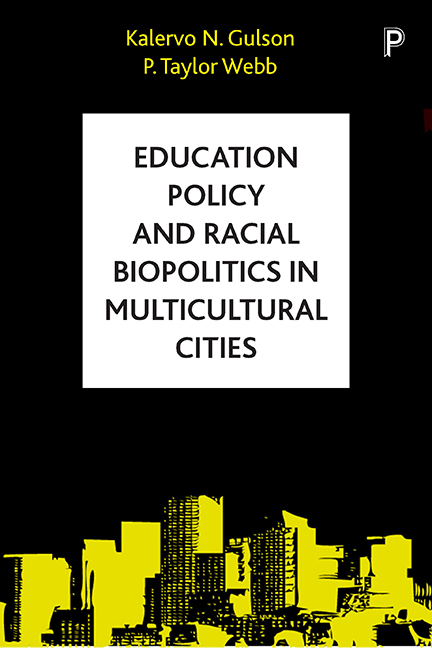Book contents
- Frontmatter
- Contents
- Notes on authors
- Acknowledgements
- Foreword
- Introduction: education policy and multicultural cities
- One Policy events
- Two Policy and biopolitics: the event of race-based statistics in Toronto
- Three The (micro)politics of racial neoliberalism With Viviana Pitton
- Four ‘Up in the northwest corner of the city’: the city, race and locating the school
- Five Difference and recognition
- Six Policy events, race and the future of the city
- References
- Index
Five - Difference and recognition
Published online by Cambridge University Press: 05 April 2022
- Frontmatter
- Contents
- Notes on authors
- Acknowledgements
- Foreword
- Introduction: education policy and multicultural cities
- One Policy events
- Two Policy and biopolitics: the event of race-based statistics in Toronto
- Three The (micro)politics of racial neoliberalism With Viviana Pitton
- Four ‘Up in the northwest corner of the city’: the city, race and locating the school
- Five Difference and recognition
- Six Policy events, race and the future of the city
- References
- Index
Summary
The shooting deaths of several young Black men between 1988 and 2007 were integral events in the becoming of the Africentric Alternative School. The shootings produced a spectrum of affects for those working to develop the school. This affective spectrum would coalesce with other feelings of empowerment and safety produced by the governing and patterned sequences of neoliberalism and biopolitics. This affective amalgam would serve as a powerful catalyst in the development of the school and in the fight against Black racism in Toronto more broadly.
Many initiatives from 1988 to 2007 were aimed at reducing anti-Black racism, including in the areas of educational and employment opportunities, policing behaviours, and through the creation of Ontario's Black Secretariat as the provincial means to support, coordinate and regulate these and other initiatives. Within these eventintervals, it is not hard to imagine several potential books that could examine in more detail police reform, non-discriminatory employment laws, and the rise and fall of the Black Secretariat as they influenced the becoming of the Africentric Alternative School. That is to say that the becoming of the Africentric Alternative School is only understandable within the truncated accounts of other events; series within series of entangled accounts related to police education, equal employment opportunities and governmental enforcement.
Our focus in this chapter is on the ways the becoming of the school entailed an established array of dispositifs concerned with recognition, difference, safety and ‘identity politics’. These dispotifs had long but accessible histories within the city's educational programmes and provided the registers for thinking and acting for several trustees who would eventually cast votes on the fate of the school. The chapter discusses the politics of recognition in relation to broader anti-racist practices, and specifically discusses how these ideas were brought to bear upon the Toronto District School Board (TDSB) after the shooting and death of a grade nine student, Jordan Manners. We show how the shooting deaths of several Black men in Toronto were absorbed into policy regimes that affected the becoming of the school. Moreover, we show how impermanent ideas of recognition, representation and difference strongly steered policy making that ultimately produced the school.
- Type
- Chapter
- Information
- Education Policy and Racial Biopolitics , pp. 97 - 120Publisher: Bristol University PressPrint publication year: 2017



